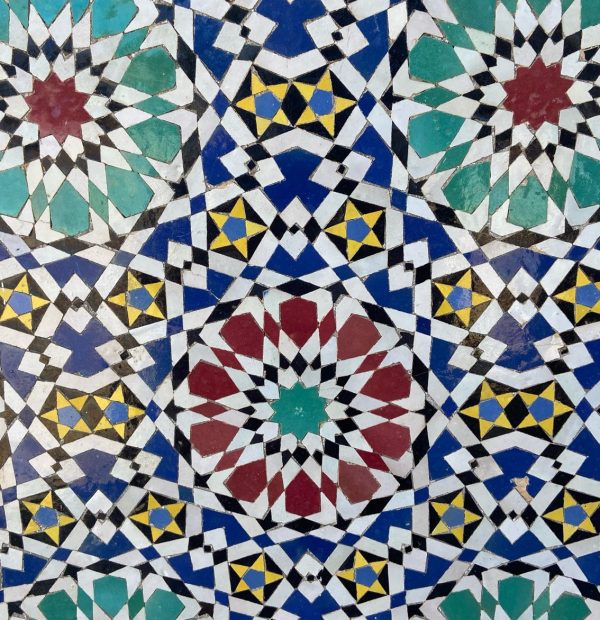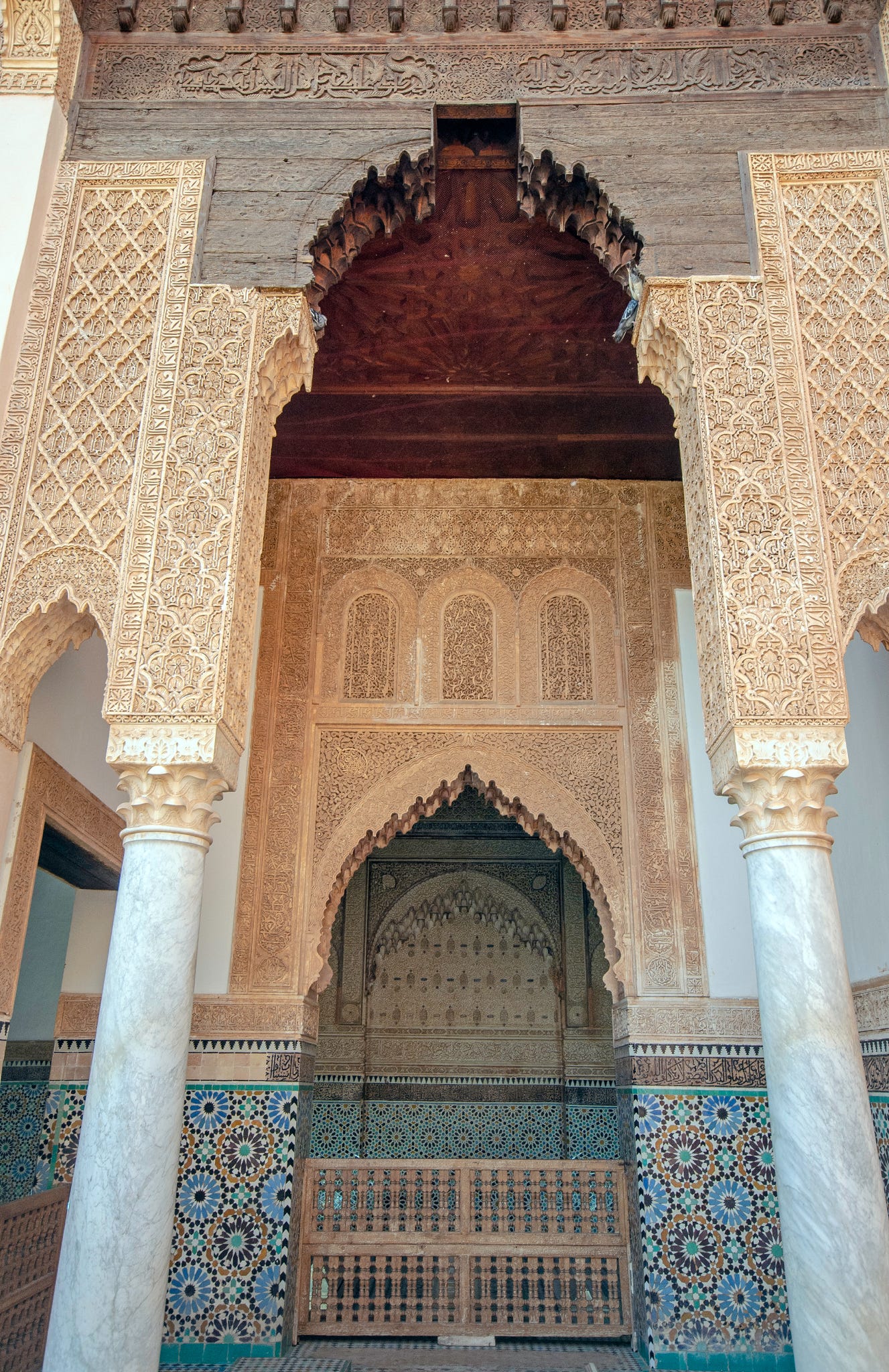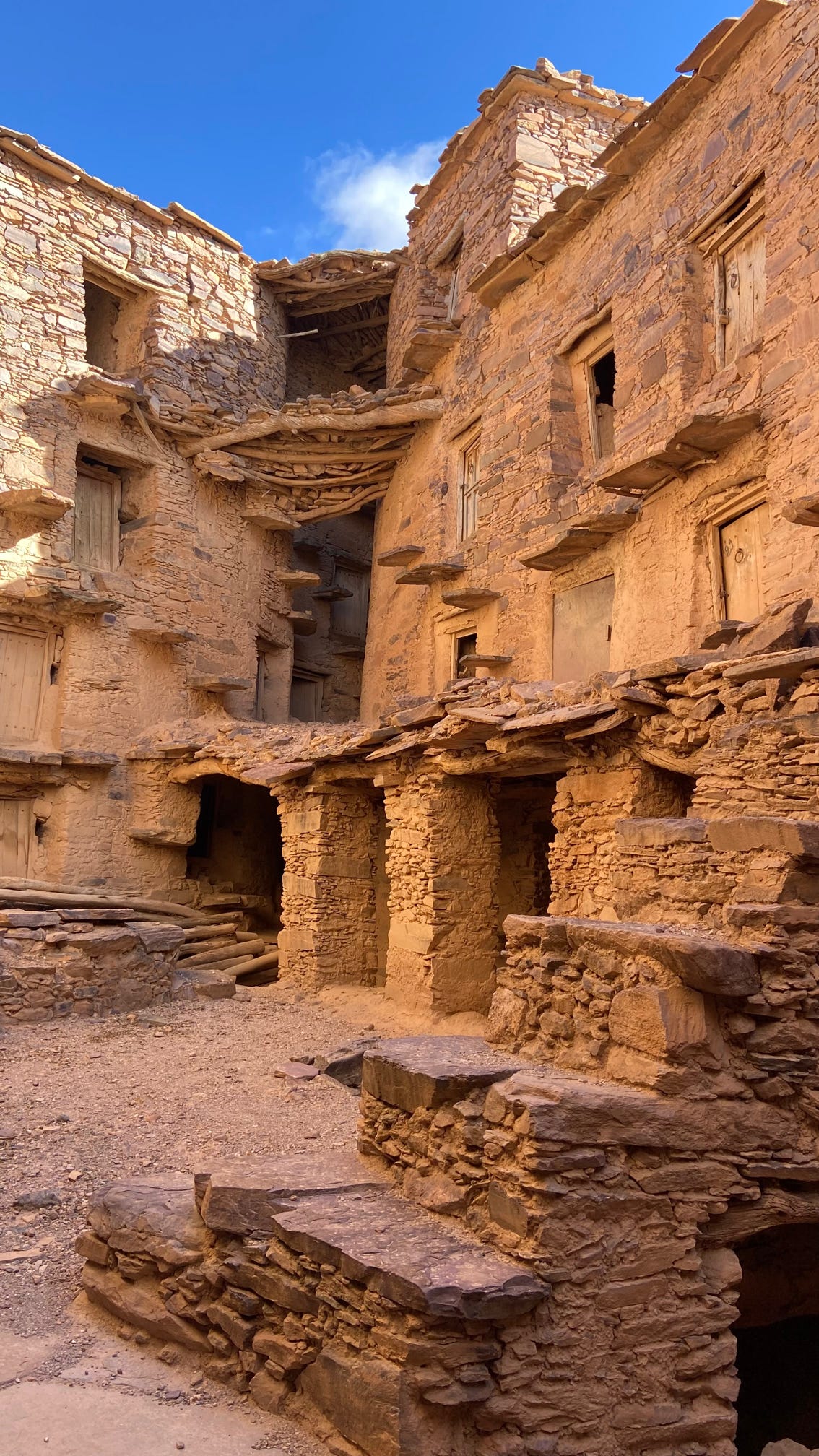
5 Powerful Elements: Architecture in Morocco That Define Its Beauty
Architecture in Morocco is a mesmerising fusion of diverde cultural influences that have shaped the country’s unique and enchanting style. With history spanning centuried, Morocco’s architecture reflects a rich tapestry of Arab, Berber, Andalusian, and French colonial elements.
The iconic medinas, with their labyrinthine alleyways and intricately designed riads, showcase exquisite craftsmanship and traditional Islamic motifs. The stunning mosques, covered with ornate tilework and delicate stucco, stand as impressive symbols of religious devotion.
The majestic kasbahs and fortresses, perched on top of rugged landscapes, create a sense of ancient grandeur and strategic prowess. In the more contemporary urban centers, modern architecture coexists harmoniously, blending Moroccan authenticity with contemporary design concepts.
From the vibrant blue streets of Chefchaouen to the sprawling architectural wonders of Marrakech, Morocco’s architectural marvels are a captivating journey through time and a celebration of cultural heritage.
Architecture in Morocco – A Rich Tapestry of History and Culture
Moroccan architecture is a true reflection of the country’s rich and diverse cultural heritage, blending elements from Arab, Berber, Andalusian, and French colonial influences. Over centuries, these influences have created a beautiful, harmonious fusion that captivates both locals and visitors alike. The country’s architectural landscape is full of life, with each building and space telling its own story.
Architecture in Morocco – Traditional Materials
One of the most striking aspects of Moroccan architecture is the way it connects to the land. Many traditional buildings are made from locally sourced materials, such as mudbrick, stone, and adobe, giving the structures a natural, earthy feel. These materials are not just practical, they are also part of Morocco’s environmental consciousness, as they help maintain the inside temperature in both hot and cold weather.
In the rural regions, particularly in the Atlas Mountains, you’ll find kasbahs and riad homes that are made almost entirely from mudbrick. Even in modern cities, the tradition of using natural materials is still honored, especially in eco-friendly buildings and hotels.
Architecture in Morocco – Islamic Art and Design
Moroccan architecture is renowned for its stunning Islamic art. It’s a place where beauty and spirituality come together in intricate tilework, delicate stucco carvings, and stunning calligraphy. The use of geometric patterns is not only a visual delight but also a reflection of the infinite nature of God. These designs can be seen in the walls of mosques, fountains, palaces, and homes throughout the country.
The world-famous Zellij tiles, which are hand-cut into geometric shapes, create colorful mosaics on floors and walls, turning everyday spaces into works of art. These tiles are not only decoration—they also represent the harmony of nature and the divine. Stucco carvings are another hallmark of Moroccan design, often depicting intricate floral or geometric patterns that seem to flow effortlessly across the surfaces they adorn.
Calligraphy plays a huge role in Moroccan buildings too, especially in mosques. Verses from the Qur’an are inscribed on the walls, acting as both decoration and a spiritual reminder of the presence of God. This delicate combination of art and faith brings a sense of peace and serenity to every corner of Moroccan architecture.
Architecturein Morocco – The Riad
A riad is more than just a house in Morocco; it’s a sanctuary. The traditional Moroccan home is designed with a central courtyard, often featuring a fountain or a small garden at the heart of the home. This layout creates a peaceful and private space, shielded from the bustling streets outside.
Riads are often adorned with intricate woodwork, hand-painted tiles, and lush greenery, creating an oasis within the city. The design of these homes is focused on privacy and comfort, with thick walls to insulate against the heat. The concept of beauty within is key in Moroccan homes—what you see from the outside is often simple, but inside, you’re greeted with the artistry and tranquility that makes Moroccan design so special.
Architecture in Morocco – Kasbahs and Palaces
Moroccan kasbahs and palaces stand as impressive monuments to the country’s history. These fortified structures are strategically built on high ground, often overlooking valleys or deserts, showcasing the importance of both defense and beauty. Kasbahs, made from mudbrick and stone, are still dotted across Morocco’s rural landscape, and they offer a glimpse into the country’s past.
The most famous of these kasbahs is Ait Benhaddou, a UNESCO World Heritage site. Its towering walls and narrow alleyways tell the story of a place that has witnessed centuries of history. Today, these kasbahs serve not only as historical landmarks but also as inspiration for filmmakers and travelers.
When it comes to palaces, Morocco is home to some of the most stunning examples of architectural grandeur. The Bahia Palace in Marrakech, for example, is a testament to Morocco’s golden age of architectural design, featuring beautiful courtyards, intricate wood carvings, and lush gardens. These palaces were built to impress and provide a sense of luxury, but they also served as places for reflection, offering spaces of peace and quiet away from the world.
Architecture in Morocco – A Fusion of Old and New
The French colonial period left its mark on Moroccan architecture, particularly in the city of Casablanca. Here, you’ll see Art Deco and Beaux-Arts styles interwoven with Moroccan elements, creating a unique architectural blend. The Ville Nouvelle in Casablanca showcases wide boulevards and stately buildings that carry the legacy of French influence.
At the same time, this fusion of French and Moroccan architecture offers an intriguing contrast, where traditional Moroccan arches and tilework meet the sleek lines of modernist design. Casablanca’s Hassan II Mosque, which is one of the largest mosques in the world, blends traditional Moroccan craftsmanship with cutting-edge design, with its towering minaret and intricate tilework.
Architecture in Morocco – Architecture for the Future
As Morocco grows, contemporary architecture has begun to make its mark, but even here, the country stays true to its roots. Newer buildings often incorporate traditional Moroccan elements like arches, courtyards, and decorative tiles, while also embracing modern green architecture practices. Architects are increasingly looking for ways to create sustainable buildings that blend with Morocco’s natural beauty, using renewable energy and eco-friendly materials.
Cities like Marrakech and Casablanca have seen a rise in modern hotels and residences that reflect the country’s forward-thinking approach while still paying homage to its architectural heritage. These modern spaces are often designed to respect the environment, with solar panels, green roofs, and natural cooling systems that keep in line with Morocco’s commitment to sustainability.
Morocco’s Cities
New faces, new places and Berber Pizza
Table of Contents
contents






